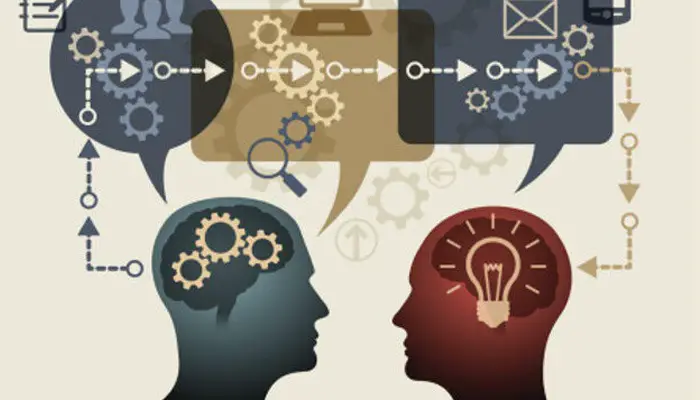
Divergent thinking is characterized by the ability to generate multiple and ingenious solutions to the same problem. It is a process in which different ideas arise from the same stimulus, which can be a question or a problem.
If we are able to generate different ideas that are associated among them indefinitely in the face of a certain fact, we will come to numerous conclusions that are, in principle, all valid. It is also known as lateral thinking, and involves a process quite different from the linear method.
The benefits of this type of thinking are evident, without excluding the usual options, it allows you to increase the range of possibilities. You have more solutions, more answers and, consequently, more results.
Conventional thinking arises linear thinking, that is, it only presents one solution to face a problem, which is achieved by following a list of steps or procedures, it does not motivate creativity or innovation.
On the contrary, divergent thinking does, it already knows a solution based on convergent thinking, but if it is not the appropriate one, it looks for other options to solve the problem.
How can I train my mind for divergent thinking?
For this we will focus on 4 very clear objectives:
- Improve our fluency: ability to produce a large number of ideas.
- Improve our flexibility: being able to create varied ideas based on various fields of knowledge.
- Originality: ability to create innovative ideas.
- Improve our elaboration: aptitude to improve our ideas, to develop them with more sophistication.
How to promote divergent thinking?
 There are several ways to exercise divergent thinking in order to increase our creativity and the ability to analyze conflicts more deeply and with more options when deciding what to do.
There are several ways to exercise divergent thinking in order to increase our creativity and the ability to analyze conflicts more deeply and with more options when deciding what to do.
For example, some activities we can do to promote this method is to create a list of questions and be able to think and reflect based on them. Concept maps, networks and a free writing routine may also be possible options to exercise this way of thinking.
It is, therefore, about thinking outside the box, modifying the brain structure when addressing a problem, exploiting the brain’s disruptive capacity to break with pre-established conventions and create new rules.
Different dynamics that allow us to exercise creativity and divergent thinking are:
Synectic exercises: This technique consists of looking for relationships between concepts that, a priori, are not linked. For example, A mobile for ?: To call, to put on the ceiling, to move among places.
Scamper technique: This strategy is based on subjecting an idea or project to different filters. For example, substitute an element of an equation, then choose to combine all the possibilities, bring a new one, or eliminate a part of it.
Association Fluidity: It is about participants in a group dynamic giving the maximum number of synonyms of a word list.
Titles of arguments: This exercise requires those involved to contribute the largest number of titles about a given story.
To conclude we can say that sometimes, in our tasks or in our life style so full of pressures and concerns, we sometimes neglect valuable dimensions. Therefore, using this type of thinking can give us a better attitude towards life, where we can be freer, happier, nonconformist, and open to better experiences.
We believe in the New Earth Shift towards a sustainable lifestyle that creates our own resources and is moving towards self-governance between the people. This will enable people to have more time for themselves and their practice as well as taking care of the planet and learn the traditional ways that once lead the land.
http://ResonanceCR.com/
